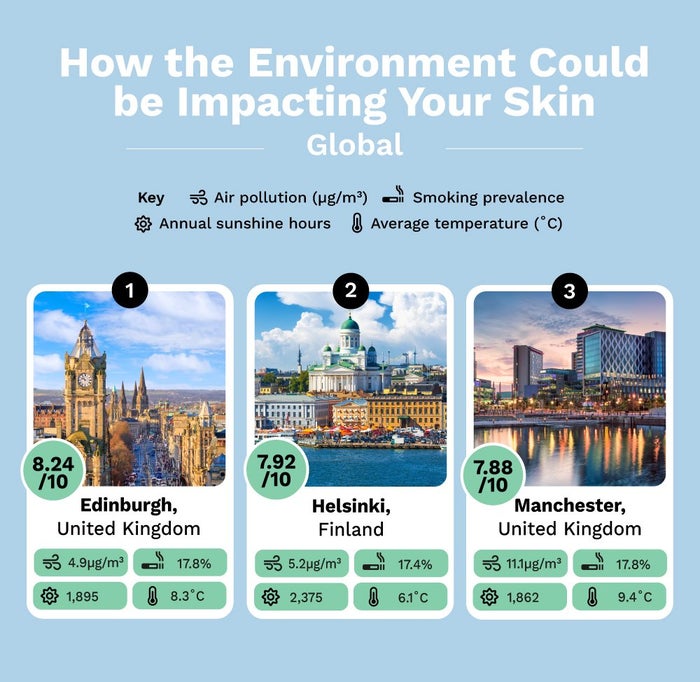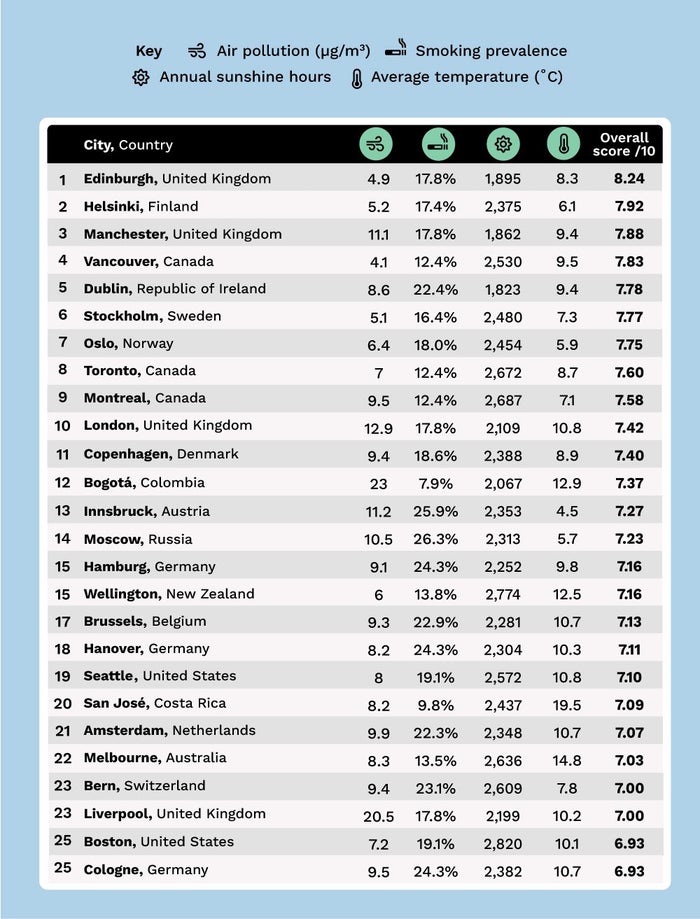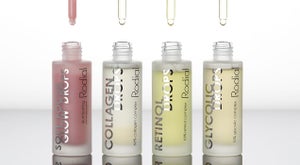
Which cities are most affected by factors such as air pollution and UV light?
Having a proper skincare routine is the key to keeping your skin looking and feeling young, fresh and radiant.
However, there are many other elements that could be affecting your skin, including influences from your environment.
Factors such as UV exposure and the levels of pollutants in the air can have an impact on your complexion and in extreme cases, even cause more serious issues such as skin cancer.
But which are the cities both here in Australia and around the globe that are most affected by these factors?
Here at LOOKFANTASTIC we’ve analysed cities around Australia and around the world, to find out which cities are most affected by factors such as air pollution and UV light.
We gave each city a normalised score out of 10 for each factor with the worst city scoring 1, the highest-scoring 10 and all other cities calculated relative to this.
We then took an average of all of these scores to calculate a final score out of 10 for each city.
How the environment could be impacting your skin (Australia)

1. Ballarat, Victoria - 8.55 out of 10Air pollution: 2.1µg/m³Smoking prevalence: 12.1%Annual sunshine hours: 2,481Average temperature: 12.4˚C
The Australian city where skin is least impacted by the environment is Ballarat, situated in the Central Highlands of Victoria, with a score of 8.55 out of 10.
Due to its elevation, the city has one of the lowest average temperatures in Australia, as well as low sunshine hours.
Ballarat also has a very low level of air pollution, at just 2.1µg/m³ of harmful PM2.5 particles.
2. Warrnambool, Victoria - 8.3 out of 10Air pollution: 2.1µg/m³Smoking prevalence: 12.1%Annual sunshine hours: 2,484Average temperature: 14.2˚C
Located a couple of hours away from Ballarat is Warrnambool in second place. The city marks the western end of the Great Ocean Road and scores very similarly to its Victorian neighbour Ballarat, with low levels of air pollution and sunshine.However, Warrnambool is slightly warmer and is known for its sandy beaches, including Bathing Beach, Shelly Beach, and Logans Beach.3. Hobart, Tasmania - 8.11 out of 10Air pollution: 3.7µg/m³Smoking prevalence: 14.3%Annual sunshine hours: 2,397Average temperature: 11˚C
Tasmania’s capital, Hobart, comes in third place, with a relatively cold climate compared to other cities in the country, as it is uniquely positioned off the mainland.Hobart has the lowest average annual temperature of the Australian cities that we looked at (11˚C), as well as the second-lowest annual sunshine hours (2,397), behind only its fellow Tasmanian city, Launceston.How the environment could be impacting your skin (Australia)

How the environment could be impacting your skin (global)

1. Edinburgh, United Kingdom - 8.24 out of 10Air pollution: 4.9µg/m³Smoking prevalence: 17.8%Annual sunshine hours: 1,895Average temperature: 8.3˚C
Edinburgh has one of the lowest levels of annual sunlight (1,895) of the cities on our list which is perfect when it comes to SPF protection.Scotland’s capital, known for its beautiful Old and New Towns and imposing castle, also scores highly for its low air pollution (4.9µg/m³).2. Helsinki, Finland - 7.92 out of 10Air pollution: 5.2µg/m³Smoking prevalence: 17.4%Annual sunshine hours: 2,375Average temperature: 6.1˚C
Unsurprisingly, it’s another colder city situated in Northern Europe that takes second place this time Helsinki in Finland.Helsinki enjoys low levels of pollution, and also has a relatively low average annual temperature of 6.1˚C, situated on a peninsula on the Gulf of Finland.3. Manchester, United Kingdom - 7.88 out of 10Air pollution: 11.1µg/m³Smoking prevalence: 17.8%Annual sunshine hours: 1,862Average temperature: 9.4˚C
Taking third place is another city in the UK, Manchester. It’s known as being a grey and rainy city which stands in its favour in this ranking with just 1,862 annual sunshine hours that could potentially harm your skin. Manchester also has relatively low air pollution at 11.1µg/m³.How the environment could be impacting your skin (global)

-------------------While they may not be the best places to live if you’re a sun worshipper, living in these areas with lower exposure to the sun’s UV rays could help prevent dryness, irritation and even skin conditions such as acne and eczema. Although regardless of where you live, it’s important to take responsibility for your own skin, especially if you live in a particularly sunny or heavily polluted area.
Methodology
For both of our rankings, we analysed a number of cities on the factors below. We gave each city a normalised score out of 10. For each factor the city with the lowest score was scored 1 and the highest-scoring city scored 10. We then calculated all of the other cities relative to this.
We then took an average of all of these scores to calculate a final score out of 10 for each city.Here are the factors we used for both rankings.Australia
We compared the 50 most populated cities in Australia, according to the Australian Bureau of Statistics, on the following factors, omitting Albany and the Blue Mountains due to a lack of data.
Air pollutionThe average concentration of PM2.5 (particulate matter smaller than 2.5 micrometres (µm)) in 2020 according to IQAir.
Smoking prevalenceThe percentage of regular smokers among people aged 18+ according to Tobacco in Australia. Note that this data was not available at city level, so refers to the wider state or territory.
Annual sunshine hoursThe number of annual hours of sunshine according to Climate-Data.org.
Average temperatureThe average annual temperature according to Climate-Data.org.
Global
Air pollutionThe average concentration of PM2.5 (particulate matter smaller than 2.5 micrometres (µm)) in 2020 according to IQAir.
Smoking prevalenceThe estimate of current tobacco smoking prevalence according to the World Health Organization’s Global Health Observatory data repository.
Note that this data was not available at city level, so refers to the wider country. Hong Kong and Taiwan are covered by the figure for China in this dataset.Annual sunshine hoursThe number of annual hours of sunshine according to Climate-Data.org.
Average temperatureThe average annual temperature according to Climate-Data.org.








